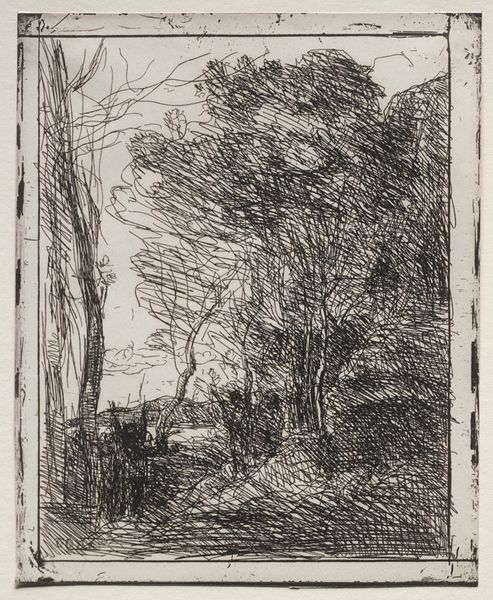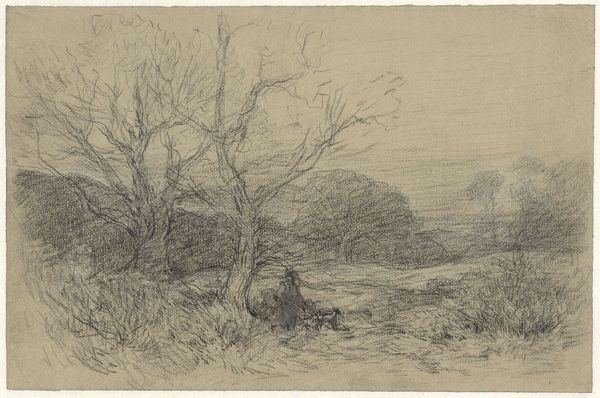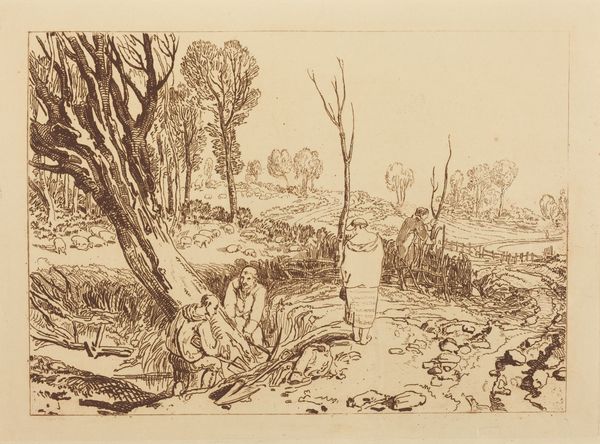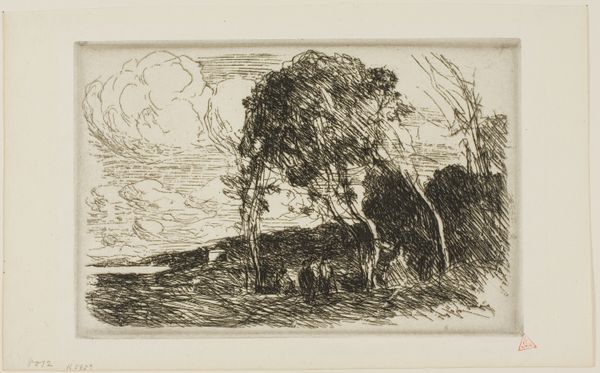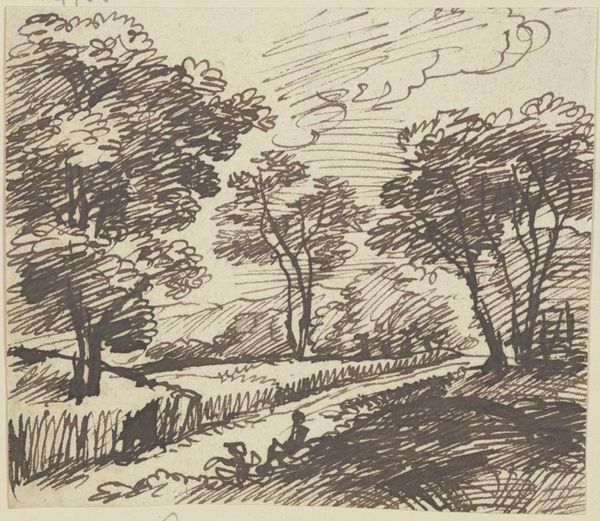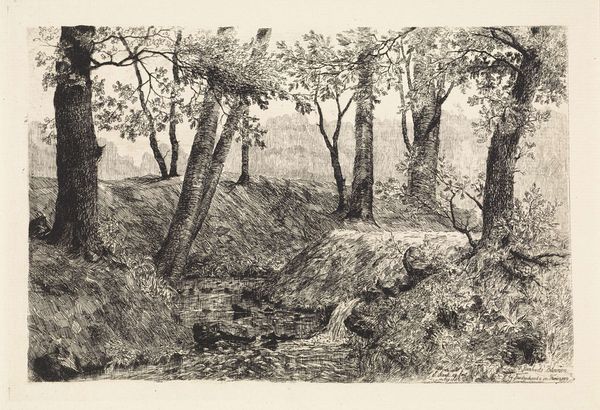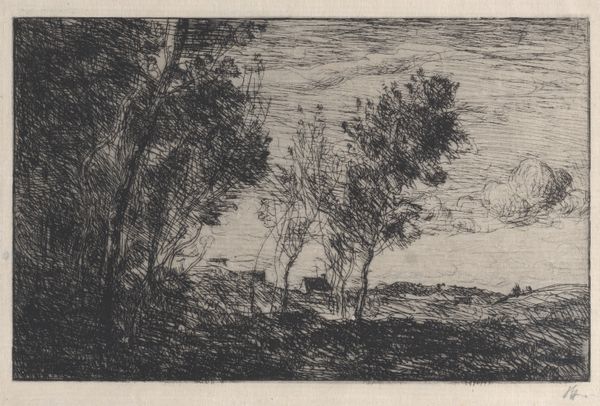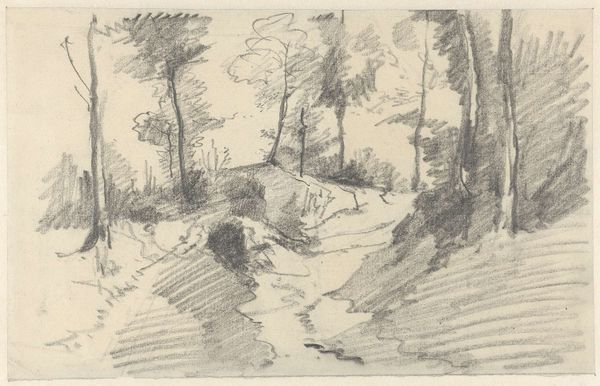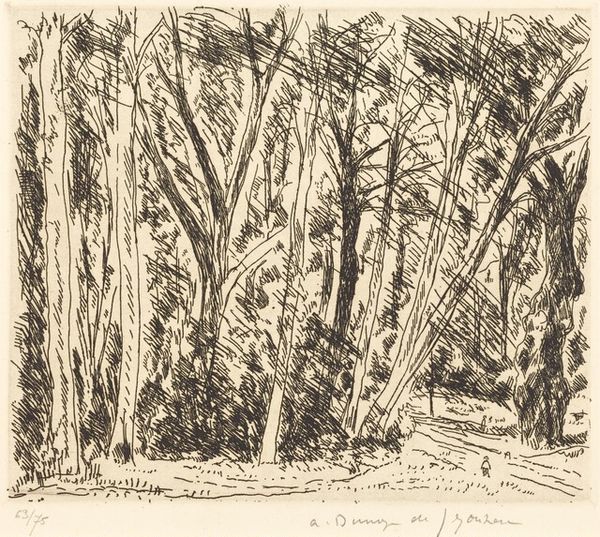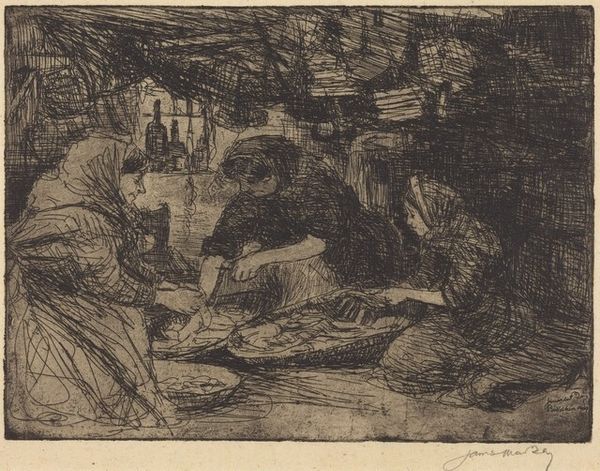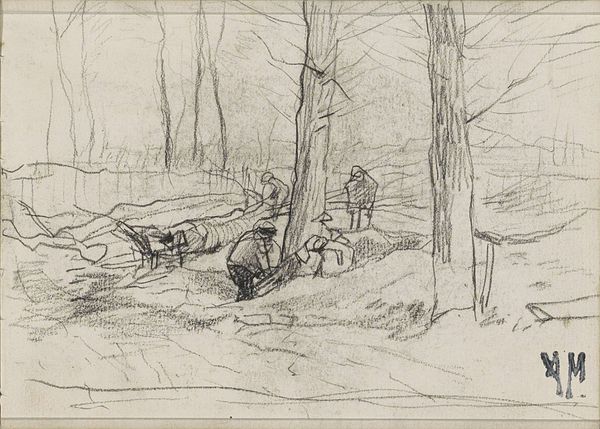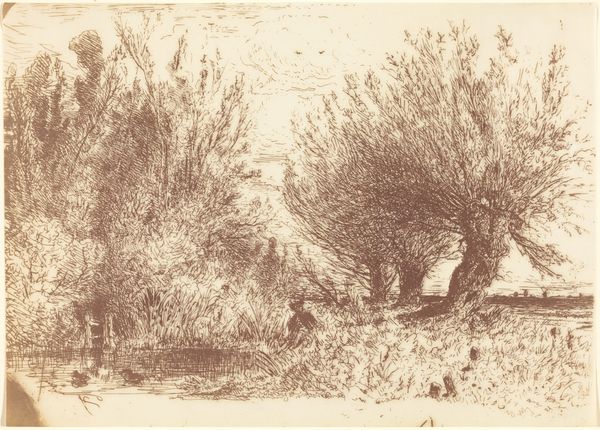
Copyright: Public Domain: Artvee
Camille Corot made this etching, Breakfast in a Glade, using metal and acid. Think about the process: the artist would have coated a metal plate with a waxy, acid-resistant substance, then scratched the image into that coating, exposing the metal. The plate was then submerged in acid, which bit into the exposed lines. The longer the plate was left in the acid, the deeper the lines. The beauty of an etching lies in its lines, their quality and how they describe form. Here, the lines are loose and gestural, giving the scene a sense of spontaneity. Notice how the lines vary in thickness and depth, creating a range of tonal effects. The amount of labor is considerable. Each print requires the artist's touch, making it a uniquely handcrafted object, far removed from industrial production, and this contrasts with the increasingly mechanized world of the 19th century, reminding us of slower, more deliberate ways of making and seeing. Looking closely at an etching like this reminds us that art is fundamentally about process. It challenges us to think about the artist's hand, and the value of skilled labor in a world increasingly dominated by machines.
Comments
No comments
Be the first to comment and join the conversation on the ultimate creative platform.
